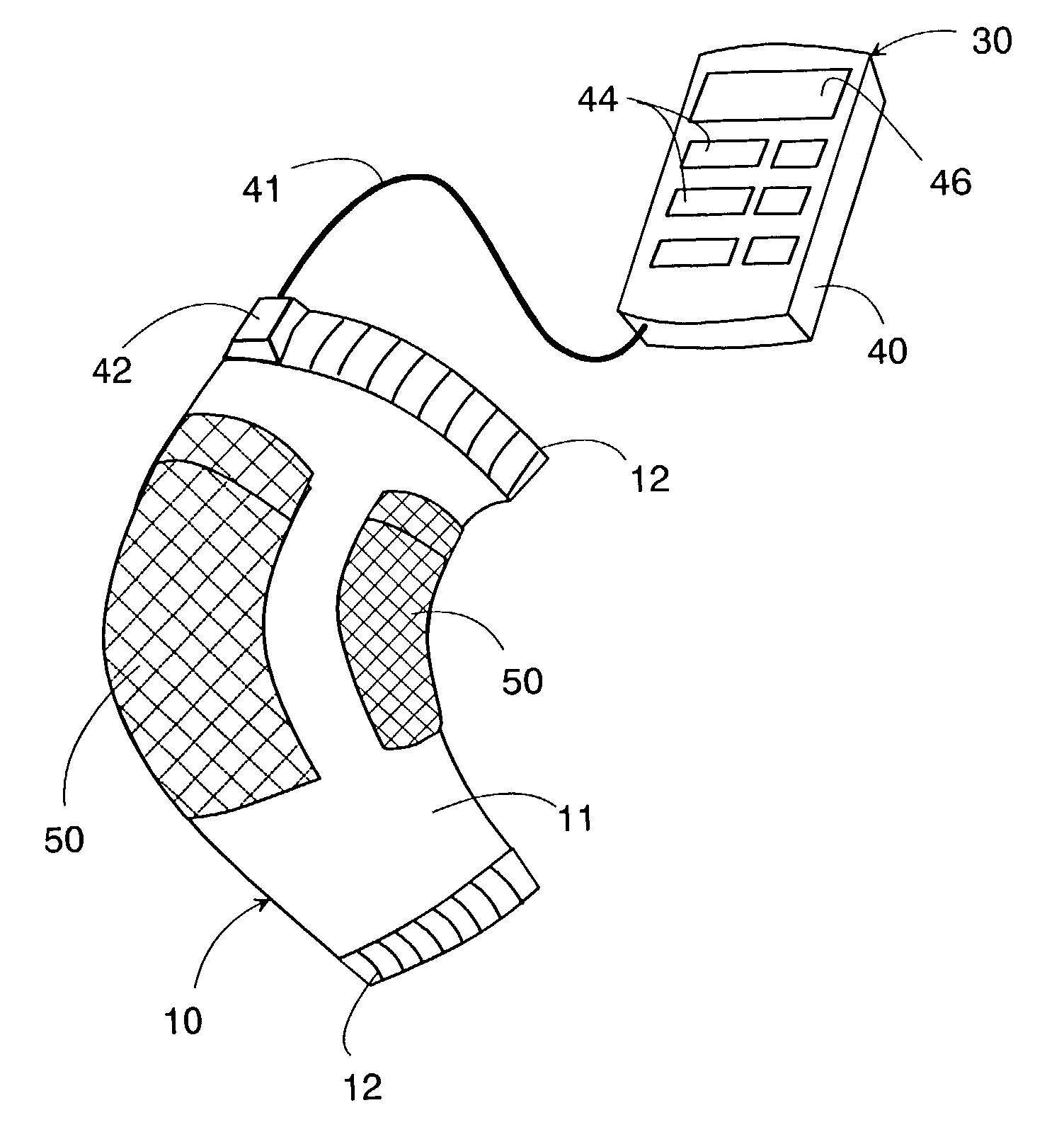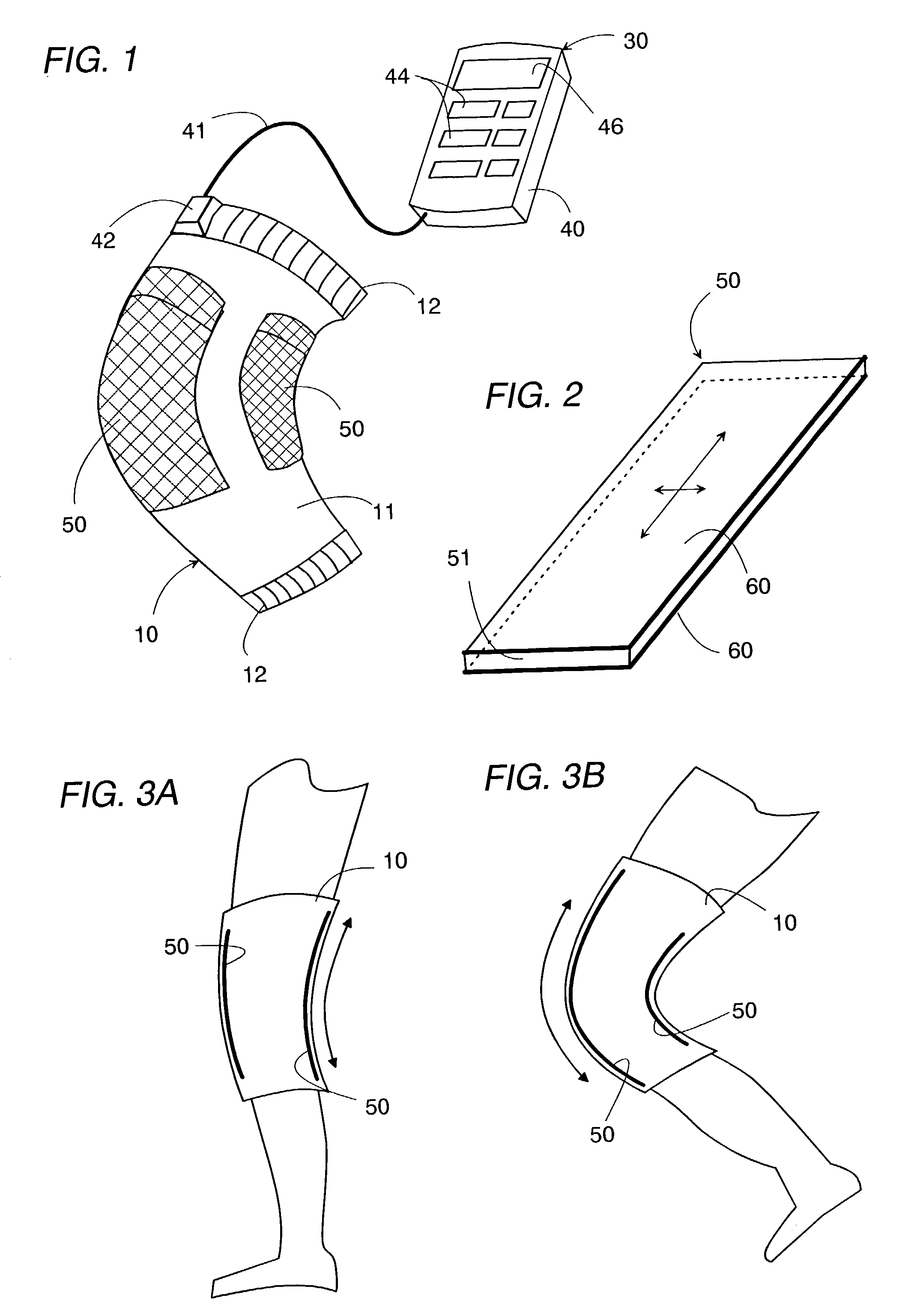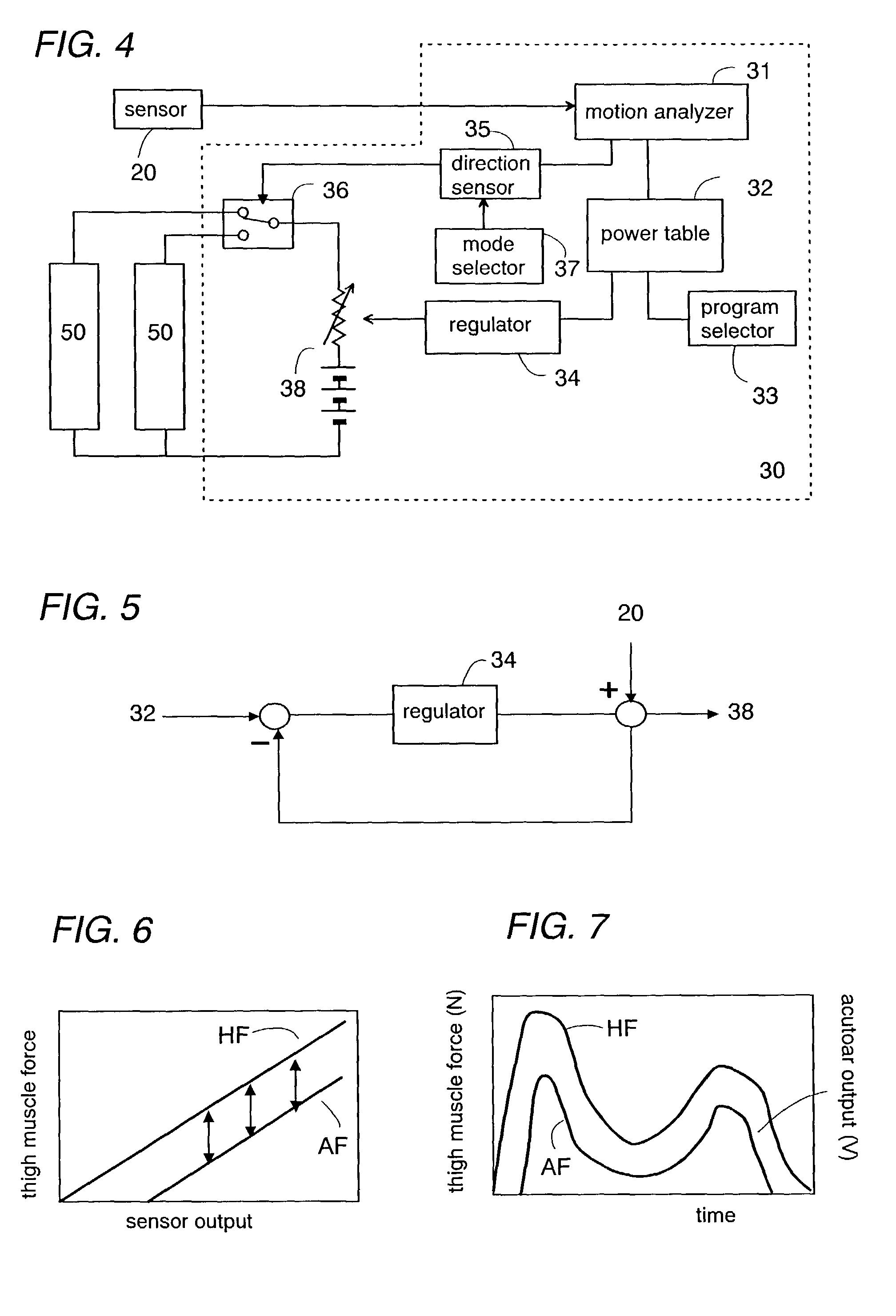Wearable human motion applicator
a technology of motion applicators and wearable parts, which is applied in the field of wearable human motion applicators, can solve the problems of insufficient prior art motion applicators, and achieve the effects of quick and sufficient displacement, and quick and sufficient deformation
- Summary
- Abstract
- Description
- Claims
- Application Information
AI Technical Summary
Benefits of technology
Problems solved by technology
Method used
Image
Examples
first embodiment
[0050]Referring now to FIG. 1, there is shown a wearable human motion applicator in accordance with the present invention. The applicator includes a flexible support 10 carrying a pair of electro-active elastic actuators 50, and a controller 30 carried on a user, for example, attached to clothing of the user or placed in a pocket of the clothing. The flexible support 10 includes a main body 11 of a stretchable fabric adapted to be fitted around a part such as a knee joint of the human body and includes fasteners 12 for tightly holding the support 10 around the part. The main body 11 may be fabricated into a sleeve or bandage as shown in FIG. 8. The actuator 50 is generally known as the electrostrictive polymer actuator and is composed of a dielectric core 51 made of an elastomeric polymer such as acrylic elastomer and silicone, and a pair of flexible electrodes 60 on opposite surfaces of the core. As shown in FIG. 2, the actuator 50 of the present embodiment is provided in the form ...
third embodiment
[0059]FIG. 10 shows the present invention which is designed to reduce distortion about a spine of the human body and includes a cylindrical torso support 10B wrapped around a torso of the human body. The torso support 10B is made from a flexible material and carries a pair of like actuators 50B which are shaped into bands extending circumferentially about a lengthwise axis of the support and crossing with each other on back of the support. Also carried on the support 10B are four sensors 20B which are provided respectively at portions corresponding to the opposite ends of each actuator 50B so as to obtain amounts of strains of the torso respectively about the lengthwise axis as well as about a horizontal axis perpendicular to the lengthwise axis. The output of the sensors 20B are processed by a like motion analyzer as utilized in the embodiment of FIG. 4 to give a strain signal indicative of the amounts of the strains. A like controller is included in this embodiment to give the dri...
fourth embodiment
[0061]FIGS. 12 to 14 show the present invention which is designed to give a massaging action to a lower limb of the human body, and includes a flexible tubular support 10D fitted around the lower limb adjacent a calf. In this embodiment, the support 10D carries a single elastic actuator 50D of a tubular configuration formed on the interior and exterior surfaces respectively with flexible electrodes. The tubular actuator 50D expands in a radial direction upon receiving the increasing driving DC voltage across the electrodes and contracts as the DC voltage decreases. Thus, it is made to repeat generating and releasing a pressing force applied to the lower limb of the human body for giving a massaging action thereto.
[0062]For this purpose, the controller 30D includes a random signal generator 39D which generates a random signal which is fed through a multiplier 47D to a voltage generator 48D where the signal is processed to provide the driving DC voltage of a suitable level to be suppl...
PUM
 Login to View More
Login to View More Abstract
Description
Claims
Application Information
 Login to View More
Login to View More - R&D
- Intellectual Property
- Life Sciences
- Materials
- Tech Scout
- Unparalleled Data Quality
- Higher Quality Content
- 60% Fewer Hallucinations
Browse by: Latest US Patents, China's latest patents, Technical Efficacy Thesaurus, Application Domain, Technology Topic, Popular Technical Reports.
© 2025 PatSnap. All rights reserved.Legal|Privacy policy|Modern Slavery Act Transparency Statement|Sitemap|About US| Contact US: help@patsnap.com



